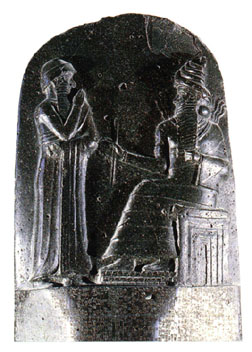Cards In This Set
| Front | Back |
 Name, society, which part(s) of this is characteristic of that society's art |
Tell Asmar Statues - Sumerian(2700 BCE)
|
 Name, society, describe |
Standard of Ur - Sumerian(2600 BCE)
|
 Name, society, which part(s) of this is characteristic of that society's art |
Lyre - Sumerian(2600 BCE)
|
 Name, society, location, describe |
Ziggurat - Sumerian(2100 BCE)
|
 Name, society, describe the significance of the figure itself and its material |
Gudea - Sumerian(2100 BCE)
|
 Name, society, which part of this is characteristic of that society's art and the beliefs of the time |
Victory Stele of Naram-Sin - Akkadian(ca. 23rd century BCE)
|
 Name, society, give its historical significance and differentiate between the two figures |
Stele of Hammurabi - Babylonian(ca. 1780 BCE)
|
 Name, society, describe, and give the current location |
Ishtar Gate - Babylonian(ca. 575 BCE)
|
 Name, society, describe |
Lion Gate - Hittite(ca. 1400 BCE)
|
 Name, society, describe |
Palace of Sargon II - Assyrian(720-705 BCE)
|
 Name, society, describe |
Lamassu - Assyrian(ca. 700 BCE)
|
 Name, society, which part of this is characteristic of that society's art and beliefs |
Lion Hunt - Assyrian(ca. 640 BCE)
|
 Name, society, medium, decor, builder(s), destroyer(s) |
Persepolis - Persian(ca. 500 BCE)
|
 Name, society, medium, decor, builder(s), destroyer(s) |
Persepolis - Persian(ca. 500 BCE)
|
 Name, society, patron, influences from other culture(s) |
Palace of Shapur I - Persian(ca. 250 CE)
|



